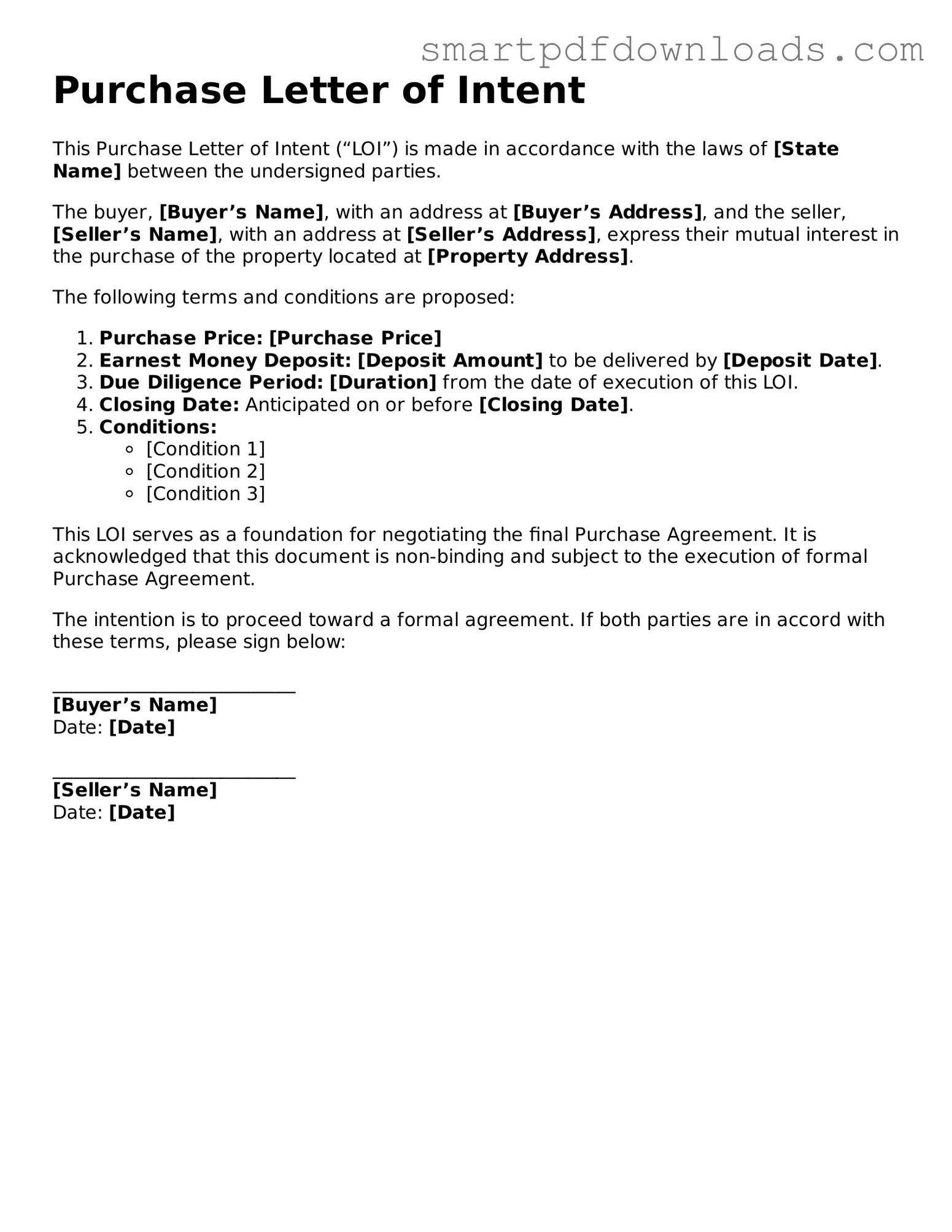Purchase Letter of Intent
This Purchase Letter of Intent (“LOI”) is made in accordance with the laws of [State Name] between the undersigned parties.
The buyer, [Buyer’s Name], with an address at [Buyer’s Address], and the seller, [Seller’s Name], with an address at [Seller’s Address], express their mutual interest in the purchase of the property located at [Property Address].
The following terms and conditions are proposed:
- Purchase Price: [Purchase Price]
- Earnest Money Deposit: [Deposit Amount] to be delivered by [Deposit Date].
- Due Diligence Period: [Duration] from the date of execution of this LOI.
- Closing Date: Anticipated on or before [Closing Date].
- Conditions:
- [Condition 1]
- [Condition 2]
- [Condition 3]
This LOI serves as a foundation for negotiating the final Purchase Agreement. It is acknowledged that this document is non-binding and subject to the execution of formal Purchase Agreement.
The intention is to proceed toward a formal agreement. If both parties are in accord with these terms, please sign below:
__________________________
[Buyer’s Name]
Date: [Date]
__________________________
[Seller’s Name]
Date: [Date]
